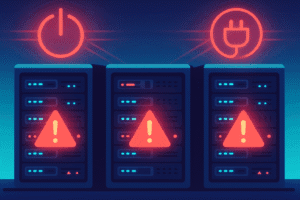Post-Quantum Encryption: Is Your Data Safe for the Next Threat?
You might think the data you encrypted today is safe. Protected by industry-standard algorithms, your sensitive information—from financial records to private communications—seems secure. But a new kind of computer is on the horizon, and it threatens to break the very foundations of our digital security. This is the era of quantum computing, and it demands a new generation of protection: post-quantum encryption.
Even if powerful quantum computers are still a few years away, the threat is here now. Adversaries are already employing a “harvest now, decrypt later” strategy. They are capturing and storing encrypted data today, waiting for the day they can use a quantum computer to unlock it all. This means that data with a long-term need for confidentiality is already at risk. The question is no longer if we need to change our security, but how soon.
The Quantum Threat to Modern Encryption
For decades, we’ve relied on public-key cryptography to secure everything from online banking to email. Systems like RSA and Elliptic Curve Cryptography (ECC) are built on mathematical problems that are incredibly difficult for conventional computers to solve. For a classic computer, factoring the large numbers that underpin RSA-2048 encryption would take trillions of years.
However, a sufficiently powerful quantum computer could solve these same problems in minutes.
Quantum computers operate on the principles of quantum mechanics, allowing them to perform complex calculations at speeds unimaginable for even the most powerful supercomputers today. An algorithm called Shor’s algorithm, specifically designed for quantum computers, can efficiently break the mathematical foundations of both RSA and ECC.
Once this happens, any data protected by these standards will be vulnerable. This includes:
- Secure web Browse (HTTPS)
- Digital signatures that verify identities
- Encrypted emails and messages
- Financial and blockchain transactions
- Software updates and secure logins
While symmetric encryption, like AES-256, is considered more resistant to quantum attacks, the public-key infrastructure we use to exchange those symmetric keys is the primary vulnerability.
What is Post-Quantum Encryption?
Post-quantum encryption (PQC), also known as quantum-resistant cryptography, refers to a new set of cryptographic algorithms designed to be secure against attacks from both classical and quantum computers. These algorithms are not based on the mathematical problems that quantum computers can easily solve.
Instead, PQC relies on different, more complex mathematical challenges that are believed to be difficult for even a quantum computer to crack. These new cryptographic foundations include:
- Lattice-based cryptography: This approach uses geometric structures called lattices. It forms the basis for some of the most promising PQC algorithms due to its efficiency and strong security proofs.
- Code-based cryptography: Based on the theory of error-correcting codes, this is one of the oldest and most studied approaches to PQC.
- Hash-based cryptography: These algorithms use the properties of cryptographic hash functions to create secure digital signatures.
- Multivariate cryptography: This method is based on the difficulty of solving systems of polynomial equations over a finite field.
The goal is to develop a new cryptographic standard that can protect data for the foreseeable future, ensuring the integrity and confidentiality of our digital world in the quantum era.
The NIST Standardization Process
To guide the transition to this new cryptographic standard, the U.S. National Institute of Standards and Technology (NIST) has been leading a multi-year effort to select and standardize a suite of PQC algorithms. After a rigorous process involving researchers and cryptographers from around the world, NIST announced its first set of standardized PQC algorithms in 2022 and has continued to refine its selections.
The primary algorithms chosen for standardization include:
- CRYSTALS-Kyber (ML-KEM): A key-encapsulation mechanism (KEM) based on lattice cryptography. This is intended to be the primary algorithm for general encryption, used for creating secure connections and exchanging secret keys.
- CRYSTALS-Dilithium (ML-DSA): A digital signature algorithm, also based on lattices. This will be used to verify identities and ensure that digital information has not been tampered with.
- SPHINCS+ (SLH-DSA): A hash-based digital signature algorithm. It serves as a backup to Dilithium, offering a different mathematical foundation in case any vulnerabilities are ever discovered in the primary lattice-based approach.
These standardized algorithms provide a clear path forward for organizations and technology providers. You can find detailed information directly on the NIST Post-Quantum Cryptography project page.
How to Prepare for the Post-Quantum Transition
The migration to post-quantum encryption is not an overnight switch. It will be a complex process that requires careful planning and execution. Waiting until the threat is imminent will be too late. Here are the essential steps your organization should take now.
1. Create a Cryptographic Inventory
You cannot protect what you do not know you have. The first step is to identify all the systems, applications, and processes in your organization that use cryptography. This inventory should detail what kind of encryption is being used, where it is located, and who is responsible for it.
2. Prioritize Based on Risk
Not all data has the same security needs. Analyze your inventoried systems to determine which ones protect the most sensitive data with the longest lifespan. Government secrets, intellectual property, critical infrastructure controls, and personal health information should be at the top of the list for migration. This risk-based approach allows you to focus your resources where they are needed most urgently.
3. Embrace Crypto-Agility
Crypto-agility is the ability of a system to switch between different cryptographic algorithms without requiring a major overhaul of the entire system. Building crypto-agility into your infrastructure now will make the future transition to PQC standards significantly smoother and less disruptive. This includes designing systems that don’t have specific algorithms hard-coded into them.
4. Test and Plan for Migration
Start experimenting with the new NIST-standardized algorithms in a test environment. Understand how they will perform and impact your existing systems. Some PQC algorithms have larger key sizes and signatures, which could affect performance and bandwidth. Early testing allows you to identify and address these issues before a full-scale rollout. Major technology companies like Google and Cloudflare are already implementing and documenting their PQC transition plans, offering valuable insights.
The Future is Quantum-Resistant
The transition to post-quantum encryption is one of the most significant security upgrades in the history of computing. While it presents a considerable challenge, it also offers a unique opportunity to build a more secure digital foundation for the future.
By starting the preparation process now, organizations can protect themselves from the immediate “harvest now, decrypt later” threat and ensure a smooth, secure migration. The age of quantum computing is coming, but with proactive planning and the adoption of post-quantum cryptography, your data can remain safe from the next generation of threats.
Share this post:














Post Comment